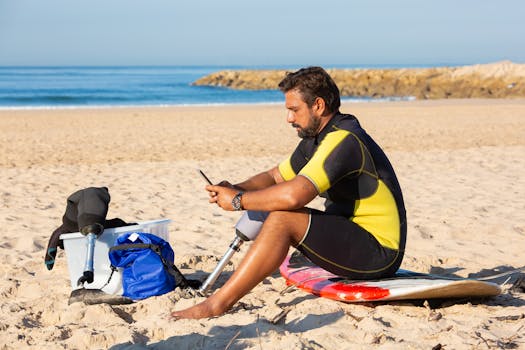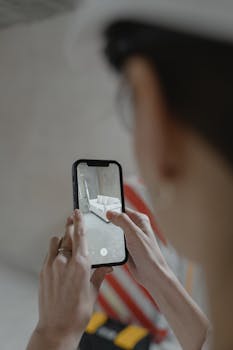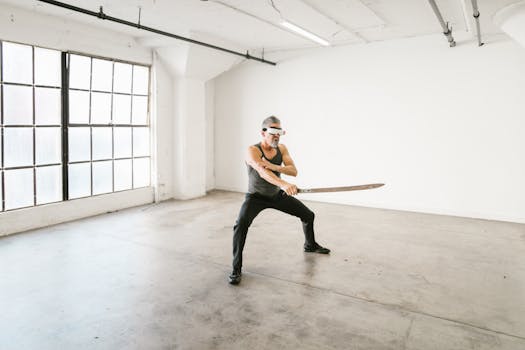Tech and Innovation Hub
Facial Recognition Apps: Weighing Benefits, Risks and Personal Privacy
Facial recognition apps promise speed and convenience, but bring risks too. Get an expert breakdown of pros, cons, privacy tips, and clear steps to secure your identity and personal data today.
Anúncios
You’ve probably encountered facial recognition apps when unlocking your phone, authorizing purchases, or even using social media filters. Their rise fits naturally into our quest for convenience and tech-forward experiences. But curiosity grows as more of us realize that these apps don’t just add fun features—they map our faces for a variety of purposes.
The implications stretch beyond instant logins or photo effects. Businesses use facial recognition for security, marketing, and even health monitoring. For individuals, these tools reshape daily habits, change expectations around privacy, and set new rules for what we share—even if we aren’t fully aware of the risks.
Let’s dig into the uses, upsides, and real-world tradeoffs of facial recognition apps. This article breaks down common scenarios, reveals hidden privacy issues, and shares actionable strategies so you can make better, informed decisions next time your device asks to scan your face.
Sorting the Pros and Cons in Everyday Use
Knowing the tangible benefits and drawbacks of facial recognition apps helps you set ground rules for their use at home or work. This overview cuts through hype to help you choose wisely.
Security, speed, and hands-free access give these apps a clear edge over passwords. Yet each advantage is balanced by unique limitations, as shown below.
Instant Login and Convenience: Balancing Gains and Shortcuts
Scanning your face to unlock your device means fewer steps, making life feel smoother. For a family member who struggles with long passcodes, facial recognition becomes their go-to solution—one less thing to remember or fumble with on busy days.
Convenience extends to secure payments. Imagine reaching the register, groceries in hand, and breezing through checkout by looking at your phone. This is enticing to anyone in a hurry or juggling tasks.
Just as smart thermostats adjust when you enter a room, facial recognition adjusts your digital access with a simple glance. Copy this approach for other quick digital routines: automate where security risk is low, and use caution for more sensitive data.
Accuracy, Error Rates and False Positives: Real Consequences
While facial recognition apps promise precision, accuracy varies. Children or twins sometimes confuse their family’s devices, accidentally unlocking each other’s profiles. In bright sunlight or with new glasses, even adults trigger false negatives.
An employee who can’t clock in because the system misreads their face understands the pain points quickly. Frustration mounts when these glitches delay daily routines or risk locking someone out of an account.
Start with apps that let you review and manage access. If rejected, have a manual backup (like a PIN) ready—giving yourself options defuses tech hiccups before they disrupt your plans.
| Benefit | Drawback | Reality Example | What to Do Next |
|---|---|---|---|
| Hands-free unlocking | May misrecognize in low light | Can’t unlock at night without light | Set up backup access (PIN or pattern) |
| Faster authentication | Risk of siblings unlocking device | Child logs into parent’s tablet | Check if your device supports liveness detection |
| No need to memorize passwords | Each scan stored remotely | Photo stored with app provider | Review privacy policies before enabling |
| Integration with apps and smart homes | Broad surveillance potential | Cameras scanning faces at entrances | Segment face data from camera feeds |
| Useful for personalized services | Easy to track frequent locations | App logs shopping visits automatically | Adjust location and camera permissions |
Setting Boundaries: Protecting Privacy from Device to Cloud
Establishing safeguards keeps facial recognition apps in check, protecting both your image and your rights. Start strong by identifying what permissions an app requests before your face ever meets a camera.
Laying these boundaries helps you control how your likeness lives online and who can access it. Begin with the following checklist.
Permission Settings and App Features: The First Line of Defense
Search for app permission settings. Some apps want access to your camera, gallery, and even location, regardless of facial recognition use. Turning off non-essential permissions stops overreach before it begins.
Dive into the feature settings. Disable extras like continuous background scanning or automatic face labeling in albums. These tweaks give you power to shape the data flow, so your image doesn’t travel further than necessary.
- Review and deny camera access when the app doesn’t need it. This blocks images from being captured without your knowledge.
- Revoke unnecessary storage permissions to prevent apps from downloading or sharing your facial scans.
- Turn off real-time background recognition unless vital, since constant scanning records your every move.
- Monitor location sharing, which, combined with face data, creates detailed maps of your habits.
- Log out of unused accounts if possible; dormant profiles are a treasure trove for data thieves.
Relying on this sequence arms every user with easy steps to safeguard their likeness, and sets a habit for new apps: check, review, limit, and adjust.
What Happens When Images Are Stored Remotely?
Cloud storage offers both backup and risk. When facial recognition apps upload images, they rely on service providers’ security—which the average user cannot see or verify.
Encrypted storage lessens some privacy threats, but remote servers are still targets for hackers. Choose apps that store as little personal data as possible, and check how deletion requests are handled before upload.
- Opt for facial recognition apps that let you erase stored data easily—protecting yourself if you ever switch services.
- Skip features requiring always-on data sync, reducing continuous exposure of your images.
- Use secure passwords for all online accounts linked to your face data to add a barrier in the event of breaches.
- Check if your provider notifies you about exposures or policy changes, so you can act quickly if there’s an issue.
- Regularly check your cloud storage folders for unexpected additions or suspicious activity and report anything odd at once.
Each of these steps ensures peace of mind each time you enable a new facial recognition app.
Real-World Scenarios: Success Stories and Cautionary Tales
User experiences reveal both the power and pitfalls of facial recognition apps. These stories help highlight the direct impact on privacy, convenience, and peace of mind.
What someone does, says, and chooses in those moments can guide your next step.
When Speed and Security Go Hand-in-Hand
At the airport, facial recognition streamlines security. A traveler stands in front of a camera, sees the gate agent nod, and proceeds without handing over any papers or tickets. The process feels smooth, and delays shrink.
In this situation, a parent with kids in tow benefits from saved time and extra attention from staff—because the scan only takes a second. Quickly verifying identity cuts down on stressful lines and provides a sense of safety for everyone involved.
Copy this airport workflow for your personal device: enroll your face once, restrict data sharing, and review who can unlock your device monthly.
Faces in Public Spaces: Crossing the Line?
Some cities have deployed cameras that scan public crowds for matches against watchlists. One woman discovers her presence at a store flagged her in a database—without her consent or knowledge. This triggers a strong sense of violation and lost anonymity.
When everyday spaces integrate unseen facial recognition, everyone’s on alert. This real-world monitoring crosses comfort boundaries: a person realizes they’re being tracked, yet can’t opt out in the moment.
If a location uses facial recognition, request a privacy policy or ask staff if you can opt out. Keep this script handy: “I prefer not to have my face scanned—is there another way to check in?”
Troubleshooting Consent and Legal Protections
Understanding the rules around facial recognition apps gives you the tools to protect your rights and take direct action if needed. Dig into practical ways to assert or withdraw consent.
Know-how about your region’s laws and what companies must disclose arms you for those moments when you’re asked to participate.
What Opt-In Should Look Like
True consent means a clear explanation of what is being scanned, where your image goes, and who sees it. For example, seeing a pop-up that explains data storage before enabling facial recognition is a must.
A person in a workplace setting shouldn’t feel pressured to enroll. Managers should provide a written opt-out option: “If you’re uncomfortable, you won’t lose access—here’s an alternate method.”
Look for apps that require you to actively enable facial recognition (checkboxes, toggles) instead of those that use the feature by default.
Legal and Regulatory Safety Nets
Some areas require companies to obtain explicit written consent before collecting biometric data. This gives individuals legal grounds to challenge data misuse. Seeing a notice like “This feature requires your signature and can be deleted at any time” keeps control in your hands.
Businesses can’t always share facial recognition images with third parties. When signing up, check for language about data sales or transfer. Knowing your rights helps you file complaints if your face is used beyond what you allowed.
Keep screenshots or download information about your preferences when you enroll. These records provide proof if disputes ever arise and let you demonstrate consent—or withdrawal—to authorities.
Analyzing App Performance: Reliability, Bias, and User Experience
Comparing real user feedback exposes the strengths and shortfalls of facial recognition apps. Seeking this evidence helps you pick services that match your needs and values. Choosing the right app can spare you from headaches down the line.
Test drive each app in different conditions—daylight, low light, with and without glasses—and check support forums for stories of unexpected behaviors. Insights from real-world users lead to smarter selections.
Detecting and Addressing Algorithmic Bias
Facial recognition apps sometimes show lower accuracy with darker skin tones, unique facial features, or non-standard appearances. Watch for signs: someone says, “My phone never recognizes me after a new haircut,” or “It fails every time my kids use it.”
If your app produces strange mismatches, leave feedback so the developers can improve the system. Companies with responsive support and regular updates are more likely to close bias gaps, creating a fairer experience for everyone.
To test for bias, share device use with friends or family who have different appearances. If the app stumbles, report your results and consider alternative apps with stronger reputations for diverse face recognition.
Improving Day-to-Day Usability
Even good algorithms need practice. If your phone suggests, “Re-scan your face in better lighting,” follow the tip and save multiple looks for best results. Developers recommend updating scans over time as your appearance changes.
Use apps that provide feedback before failing (“Move closer” or “Remove glasses”). These guides transform a frustrating lockout into a moment of learning, minimizing errors.
Reminder: Schedule routine oral checkups for your biometric settings, just as you’d check smoke detectors yearly. Refreshing your scan twice a year preserves accuracy and avoids lockouts.
Building Habits for Safe and Secure App Use
Develop routines to keep your face data safe while using facial recognition apps. Even savvy users benefit from checklists and habits that keep risks at bay and ensure security remains tight at home and on the go.
Think about these habits as regular maintenance for your digital identity, much like you’d routinely change oil in a car to avoid engine trouble.
Routine Reviews and App Hygiene
Once a month, scan your phone or computer for facial recognition features you no longer use. Remove permissions, delete scans, and clear unused accounts to limit the digital footprint of your face.
After major device updates or phone upgrades, double-check what apps have regained permissions. Sometimes, updates reset privacy settings—correcting them soon ensures old scans don’t persist where you no longer expect.
Before lending your device to someone else, log them out of any app that uses your face for sign-in, or switch to a guest mode to limit confusion and risk.
When to Take a Break from Facial Recognition
If you’re attending a sensitive work event or traveling to a location where privacy is a concern, turn off facial recognition temporarily. Use passcodes until you return to a safer or more controlled environment.
Pausing this feature can be a conscious choice, just as you’d turn off geolocation on a trip. A single switch saves future headaches if you ever worry about unwanted scans.
If you notice suspicious behavior (unexpected logins, disabled notifications), act promptly: change your app permissions, switch off face unlock, and review recent scan logs before resuming usual use.
Looking Forward: Navigating Advances and Safeguarding Autonomy
Facial recognition apps will only become more widespread as new uses emerge in healthcare, education, and entertainment. Understanding both their benefits and tradeoffs prepares you to make choices that echo your values.
Each time you let an app scan your face, remember it connects convenience to new forms of risk and responsibility. Equip yourself with practical routines—reviewing permissions, limiting uploads, and staying informed about legal rights.
Change will accelerate, but staying mindful lets you keep tech in service to your goals, not the other way around. Treat facial recognition as a powerful tool that earns trust each time it acts safely, privately, and transparently in your daily life.
Em Alta

Método Detalhado: Desenvolvimento de Jogos no Roblox
Milhões de jogadores buscam novas experiências diariamente, e um jogo bem-sucedido pode gerar uma renda substancial e contínua.
Continue lendo



